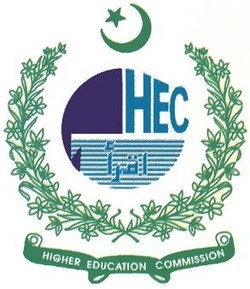Panic News and media Hype Effects on Stock Market Returns and Volatility amid Infectious Diseases Turmoil
DOI:
https://doi.org/10.61506/01.00085Keywords:
News, COVID-19, Stock returns, VolatilityAbstract
This study investigates the effect of fake news, panic news, and media hype on stock market returns amid COVID-19 in Pakistan. It also scrutinizes the asymmetric effect of bad and good news on stock market volatility. For empirical analysis, data of six indicators related to news collected from Ravenpack. The data is ranged from the date of first COVID-19 case recognition dated February 26, 2020, to October 26, 2020. This time span consist on the 166 working days in which stock market remains open. The estimates of the Multivariate EGARCH model revealed that fake news and media hype is negatively associated with the stock market returns. The negative effect of media hype is greater than fake news. The aftermath of variance equation suggests that media hype, infodemic, and panic new increase the stock market volatility. The findings of the study suggests that strong co-ordination among NCOC and Information ministry may result in stabilizing the stock market return by enhancing the investors’ confidence and reducing the panic.
References
Aggarwal, S., Nawn, S., & Dugar, A. (2021). What caused global stock market meltdown during the COVID pandemic–Lockdown stringency or investor panic?. Finance Research Letters, 38, 101827.
Ali, M., Shair, W., ur Rahman, F., & Naeem, S. (2021). The Relationship between Cash Flow Volatility and Dividend Payout Ratio: Evidence from Pakistan’s Non-Financial Firms. Empirical Economic Review, 4(2), 32-48.
Apuke, O. D., & Omar, B. (2020). Fake news and COVID-19: modelling the predictors of fake news sharing among social media users. Telematics and Informatics, 101475.
Audi, M., Ehsan, R., & Ali, A. (2023). Does Globalization Promote Financial Integration in South Asian Economies? Unveiling the Role of Monetary and Fiscal Performance in Internationalization. Empirical Economics Letters, 22(10), 237-248.
Audi, M., Sulehri, F. A., Ali, A., & Al-Masri, R. (2022). An Event Based Analysis of Stock Return and Political Uncertainty in Pakistan: Revisited. International Journal of Economics and Financial Issues, 12 (5), 39-56.
Audi, M., Sulehri, F. A., Ali, A., & Al-Masri, R. (2023). The Role of Terrorist Events in Determining Stock Returns in Pakistan: Covering Most Vibrant Era 2003-2013. Empirical Economics Letters, 22 (7), 153-164.
Barua, Z., Barua, S., Aktar, S., Kabir, N., & Li, M. (2020). Effects of misinformation on COVID-19 individual responses and recommendations for resilience of disastrous consequences of misinformation. Progress in Disaster Science, 8, 100119.
Bloom, D. E., & Cadarette, D. (2019). Infectious disease threats in the twenty-first century: strengthening the global response. Frontiers in immunology, 10, 549.
Broadstock, D. C., & Zhang, D. (2019). Social-media and intraday stock returns: The pricing power of sentiment. Finance Research Letters, 30, 116-123.
Campbell, J. Y., & Hentschel, L. (1992). No news is good news: An asymmetric model of changing volatility in stock returns. Journal of financial Economics, 31(3), 281-318.
Cepoi, C. O. (2020). Asymmetric dependence between stock market returns and news during COVID19 financial turmoil. Finance Research Letters.
Dash, S. R., & Maitra, D. (2022). The COVID-19 pandemic uncertainty, investor sentiment, and global equity markets: Evidence from the time-frequency co-movements. The North American Journal of Economics and Finance, 62, 101712.Fornaro, L., & Wolf, M. (2020). Covid-19 coronavirus and macroeconomic policy.
Gautam, A., Neha Yadav, K. S., Garg, K., & Garg, A. (2020). Exploring the Socio-Economic Impacts of COVID 19-A Case of India.
Hartley, K., & Vu, M. K. (2020). Fighting fake news in the COVID-19 era: policy insights from an equilibrium model. Policy Sciences, 53(4), 735-758.
Jones, R., Pykett, J., & Whitehead, M. (2013). Changing behaviours: on the rise of the psychological state. Edward Elgar Publishing.
Koutmos, G., & Booth, G. G. (1995). Asymmetric volatility transmission in international stock markets. Journal of international Money and Finance, 14(6), 747-762.
Li, X., Su, C. W., Li, Z., & Umar, M. (2023). What threatens stock market returns under the COVID-19 crisis in China: the pandemic itself or the media hype around it?. Economic Research-Ekonomska Istraživanja, 36(2), 2106272.
Salisu, A. A., & Vo, X. V. (2020). Predicting stock returns in the presence of COVID-19 pandemic: The role of health news. International Review of Financial Analysis, 71, 101546.
Shair, W. (2020). Is optimizing or non-optimizing objective of a firm in the Gig economy? A Chronological approach. Bulletin of Business and Economics (BBE), 9(2), 101-105.
Shair, W. ., Ahmad, N. ., Tayyab, M. ., & Ishaq, I. . (2023). Effect of Economic Policy Uncertainty on Exchange Rate Volatility in Pakistan. Bulletin of Business and Economics (BBE), 12(4), 33-44.
Shair, W., Naeem, S., & Rasul, F. (2021). Nexus of Covid-19 news with stock market returns and volatility in Pakistan. Bulletin of Business and Economics (BBE), 10(2), 92-99.
Shehzad, K., Xiaoxing, L., & Kazouz, H. (2020). COVID-19’s disasters are perilous than Global Financial Crisis: A rumor or fact?. Finance Research Letters, 36, 101669.
Smales, L. A. (2014). News sentiment and the investor fear gauge. Finance Research Letters, 11(2), 122-130.
Sulehri, F. A., & Ali, A. (2020). Impact of political uncertainty on Pakistan stock exchange: An event study approach. Journal of Advanced Studies in Finance, 11(2), 194-207.
Topcu, M., & Gulal, O. S. (2020). The impact of COVID-19 on emerging stock markets. Finance Research Letters, 36, 101691.
Wang, Y., Zhang, H., Gao, W., & Yang, C. (2023). Spillover effects from news to travel and leisure stocks during the COVID-19 pandemic: Evidence from the time and frequency domains. Tourism Economics, 29(2), 460-487.
Wu, G. G. R., Hou, T. C. T., & Lin, J. L. (2019). Can economic news predict Taiwan stock market returns?. Asia Pacific management review, 24(1), 54-59.


